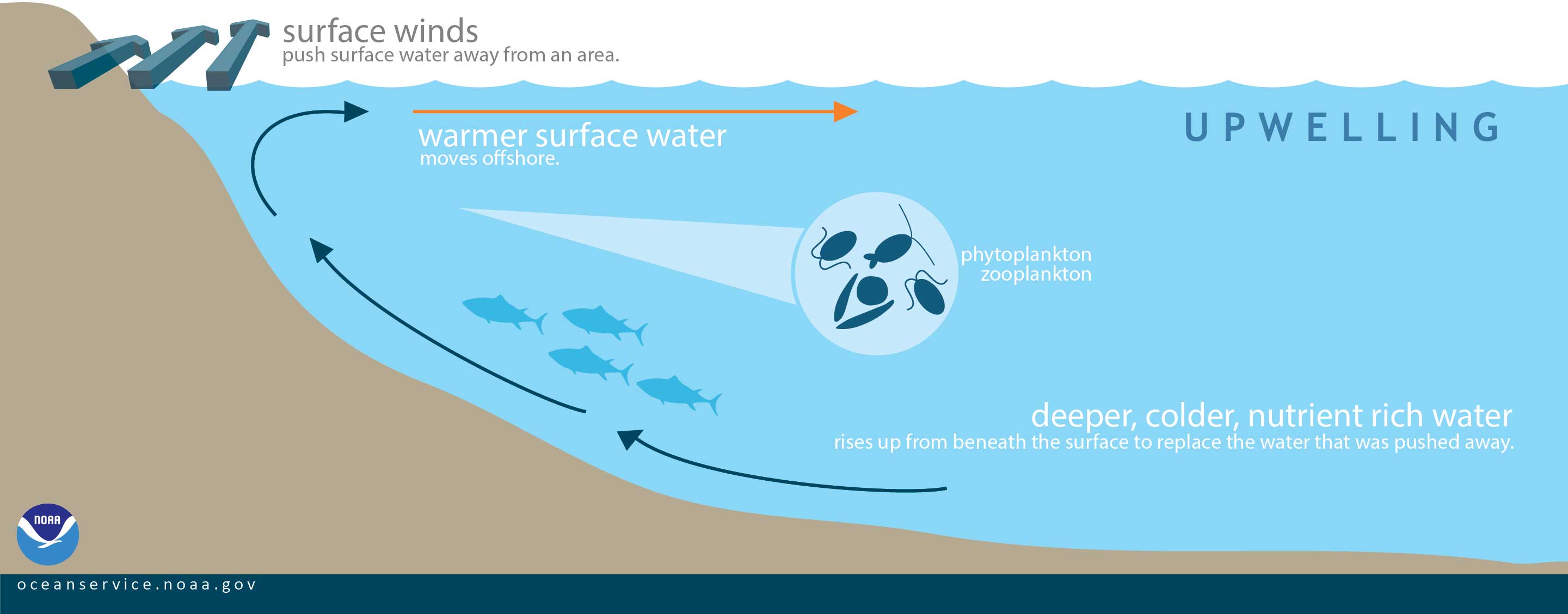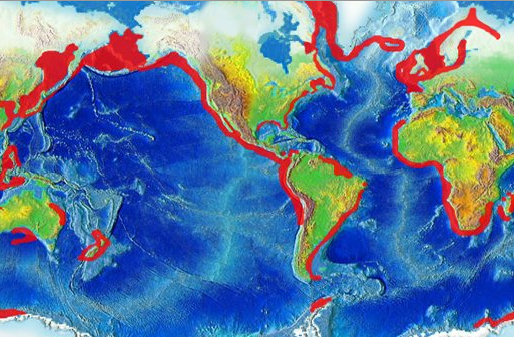Upwelling
Currents Tutorial
Winds blowing across the ocean surface often push water away from an area. When this occurs, water rises up from beneath the surface to replace the diverging surface water. This process is known as upwelling.

This graphic shows how displaced surface waters are replaced by cold, nutrient-rich water that “wells up” from below. Conditions are optimal for upwelling along the coast when winds blow along the shore.
Upwelling occurs in the open ocean and along coastlines. The reverse process, called downwelling, also occurs when wind causes surface water to build up along a coastline. The surface water eventually sinks toward the bottom.
Subsurface water that rises to the surface as a result of upwelling is typically colder, rich in nutrients, and biologically productive. Therefore, good fishing grounds typically are found where upwelling is common. For example, the rich fishing grounds along the west coasts of Africa and South America are supported by year-round coastal upwelling.
Seasonal upwelling and downwelling also occur along the West Coast of the United States. In winter, winds blow from the south to the north, resulting in downwelling. During the summer, winds blow from the north to the south, and water moves offshore, resulting in upwelling along the coast. This summer upwelling produces cold coastal waters in the San Francisco area, contributing to the frequent summer fogs. (Duxbury, et al, 2002.)
Currents Lessons
- Welcome
- Tidal Currents 1
- Tidal Currents 2
- Waves
- Longshore Currents
- Rip Currents
- Upwelling
- The Coriolis Effect
- Surface Ocean Currents
- Boundary Currents
- The Ekman Spiral
- Thermohaline Circulation
- The Global Conveyor Belt
- Effects of Climate Change
- Age of Exploration
- What is a "knot"?
- Shallow Water Drifter
- Deep Ocean Drifter
- Current Profiler
- Shore-based Current Meters
- How Currents Affect Our Lives?
- References
- Roadmap to Resources
- Subject Review
